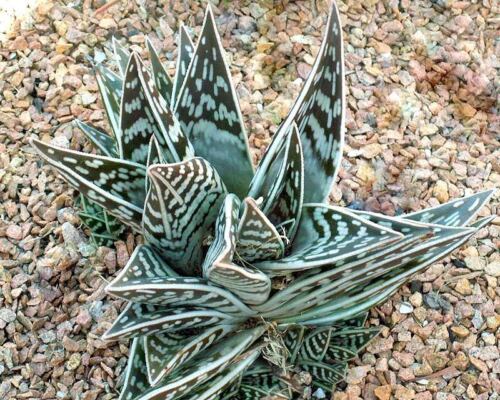|
||||||
Free Aloe Variegata Plants A highly distinctive succulent with a rosette of very thick, triangular leaves coloured dark green with whitish bands and edges. In spring the plant produces a long flower spike bearing a number of tubular flowers. The Aloe can tolerate a wide range of conditions and a certain amount of neglect. It is at its most attractive when young and compact. After a while the stem tends to become rather untidy and the plant can become topheavy, losing its original elegant, symmetrical shape as it leans to one side. Although a clay pot will help to provide stability, the appearance of the plant may eventually become so lop¬sided as to warrant being replaced with a younger specimen. New plants can be propagated fairly easily from offsets that grow in the soil. Plant type : Flowering succulent with erect habit Season of interest : Spring to early summer Size : 15-30cm (6 —12in) Flower : Tubular, 2.5cm (1 in), pink, on 10-20cm (4—8in) stem, produced from early spring to summer Leaf : Pointed, 7.5-12.5cm (3—5in) long, 2.5-4cm (1 -1±in) wide, thick, fleshy, dark green with whitish bands and edges, borne in rosette on stem Temperature : 10-28°C (50—82°F) Aspect/Light : Well-lit situation with some sunlight Humidity : Low Watering : Evenly moisten compost in spring and summer, allowing to dry a little before re-watering; water just enough to prevent dehydration in autumn and winter Feeding : Once every three to four weeks with flowering plant fertilizer in spring and summer Propagation : Remove offsets and plant in cactus and succulent compost at 18-20°C (65 — 68°F) in late spring to early summer Potting : Cactus and succulent compost Problems : Mealy bug, root mealy bug, rot from too much water Availability : Commonly available throughout year Uses indoors : Good windowsill plant Other varieties : A. aristala - more compact rosette; orange flowers |
||||||
|
||||||
